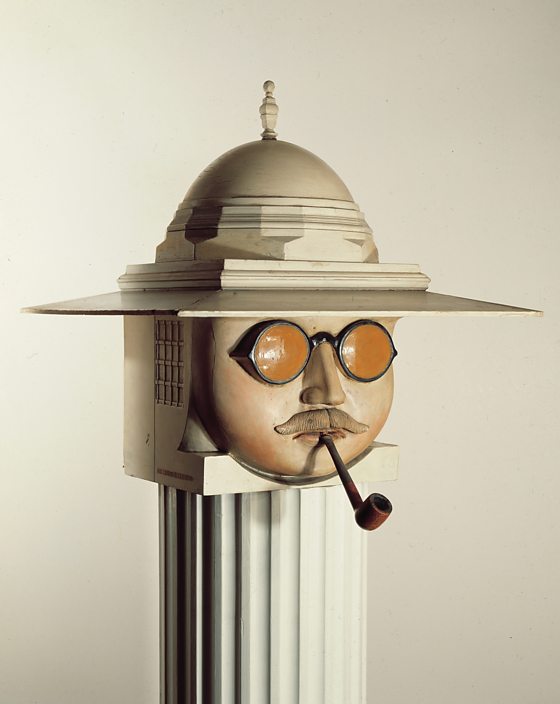Sir Edwin Landseer Lutyens’ bust has a fluted column, the hat is an
egg-shaped dome. He is a colonialist. There is now stylistic versatility. The
statue is a colonial architect. The architect went into practice as a home
extender. He worked with different styles in the houses. He interacted with
different materials. He did country houses, so he had the freedom and money to
explore. One of his houses is known as the Cotswold Manor House, a type of castle style architecture, late
medieval feudal house. He puts exterior ornamentation in the inside. He used
classical qualities in the inside, it’s kind of like his bust that uses
multiple styles. On the outside, it looks very different. He is doing this
because he thought the audiences of this building would rarely see it from a
distance, the only people that would live in it would engage only in the
interior. He queries the stone on site. Rather than bringing it from somewhere
else, he queries it in the exact site that he is building the building. This is
a material way of saying how the building belongs in its context. You can say Cotswold
Manor House influences this or you can say it is influenced by the picturesque admirers
who see it from far away, and the other audience are people who live inside the
building, who experience the multiple different styles. He was very much
interested in gardens and garden designs. He works with a woman named Gertrude
Jekyll. This woman was from that area; she was from southeast England. She knew
the material and area. By collaborating with her, he was able to bring the
context and materiality into the process of building the house. The idea is
that he is interested in the weathering. These people are much more interested
in architecture belonging to the context. This stone weathers well, and handles
the problems of that location’s weather. So this stone, you already know,
weathers well in that location. The chimneys in the house create surprise, joy,
and a varied roofline; the gabled roof also contributes this. This house is an
H plan. This shows that he is also influenced by arts and crafts. He is using
different stylistic approaches, and this is the pinnacle of when architects are
well versed in different styles. He uses pediments on top of doors in the interior;
he uses it inside, because the interior is associated with grandeur.
Lutyens is born in the height of industrialization. That is why he is embracing new industrialization methods of construction. During the last periods of his life, the empire is trying difficultly to hold onto its territories. Architecture will play a part in maintaining some of the negative effects experienced by the losses of colonialization. First industrial revolution was about production. The second industrial revolution was focused on communication. Lutyens had a relationship to context: temporal context in history, and spatial context in the site. He is interested in architecture as a practice that is produced on site. He chose to leave education and go straight to practice, half way through. The way in which architecture and style was viewed at this time, is not something you would learn by practice and doing, and often that would take place in site.
Lutyens is born in the height of industrialization. That is why he is embracing new industrialization methods of construction. During the last periods of his life, the empire is trying difficultly to hold onto its territories. Architecture will play a part in maintaining some of the negative effects experienced by the losses of colonialization. First industrial revolution was about production. The second industrial revolution was focused on communication. Lutyens had a relationship to context: temporal context in history, and spatial context in the site. He is interested in architecture as a practice that is produced on site. He chose to leave education and go straight to practice, half way through. The way in which architecture and style was viewed at this time, is not something you would learn by practice and doing, and often that would take place in site.

No comments:
Post a Comment